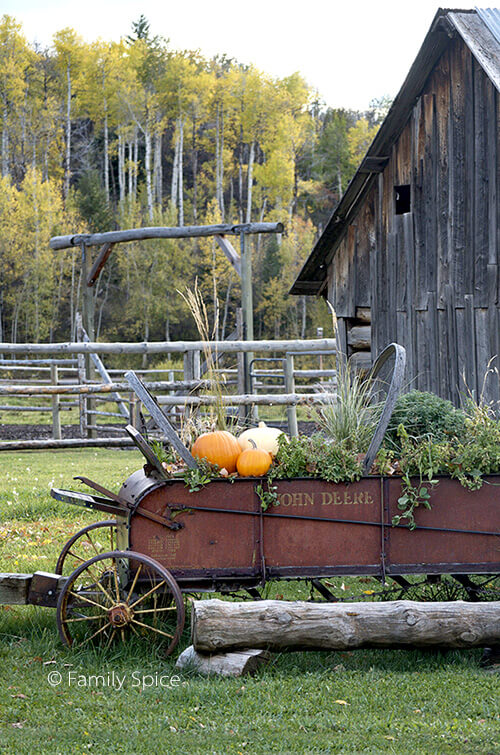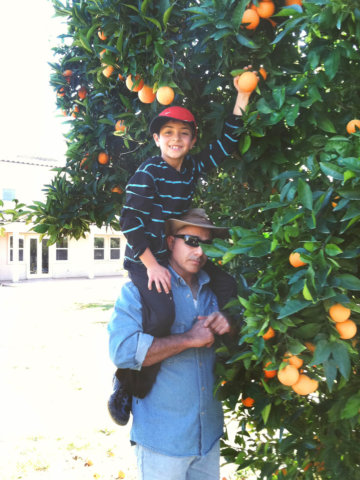My visit to Idaho with Idaho Potato Commission plus a recipe for Pumpkin Mashed Potatoes, an easy way to sneak some healthy pumpkin to the dinner table.

When my kids were little, it was important for me to teach them that the food we eat doesn’t miraculously show up at the grocery store. My husband and I tore up a patch of grass and started a garden. It’s a modest garden, which has been ignored and neglected in that past year as the California drought hindered me from growing my own fruits and vegetables.
But in the beginning, my kids were fascinated with the seed varieties, the different water requirements, the various leaves and flowers produced from squash, turnips, corn, beans, tomatoes, carrots, to name a few.
Over the years, I have become an advocate for our farmers, who every year seem to be dwindling in size and numbers. For a nation as large as ours, we certainly don’t seem to be supporting the American Farmer. But I’ll leave that rant for another post.
So when the Idaho Potato Commission invited me to join other food bloggers on their annual Idaho potato harvest in September, I jumped at the chance to go. As the trip approached, I became giddy and excited about visiting Idaho and learning everything I could about Idaho Potatoes.

Today I am sharing a brief synopsis of what I learned. I will definitely write more about my trip to Idaho, the farmers I met, the lessons I learned and of course, the gorgeous landscape I was thrilled to witness.
First, some fun potato facts. Did you know:
- Potatoes are 80% water.
- Potato “seeds” are planted in the early spring and all spuds must be harvested before frost hits.
- All the potatoes that we eat are harvested at one time. They are stored in these gigantic warehouse-style bins and distributed throughout the year to the rest of us.
- Any pesticides used on Idaho Potatoes are minimal and sprayed on the green tops in the springtime, way before the potatoes are formed. The pesticides have dissipated when the spuds are babies.
- Never store your taters in the refrigerator, unless you want sweet taters. Store your taters in a dark, cool place.
- Potatoes provide 45% of your daily need for Vitamin C and have more potassium per serving than a banana. Potatoes also contain antioxidants and other powerful phytochemicals.
- The largest importer of Idaho potatoes is… Japan!

Our first night in Idaho Falls, The Hoff family hosted a beautiful dinner on their family farm. The Hoff brothers are not only wonderful farmers, but also avid pilots. You have to check out James Hoff and his beautiful plane in this great Idaho Potato Commercial.
On our second day, we visited Lamb Weston, a frozen potato processing plant where McDonald’s and Nathan’s get their frozen french fries. Peeled potatoes are shot through a grid of blades at 70mph before they are par fried, cooled and frozen.
Potato Factoid: You can’t freeze a raw potato because it will turn black.

We also toured the Idahoan’s processing plant and saw how quickly a potato dug up that day gets washed, peeled, chopped, cooked and dehydrated for boxed mashed potatoes, scalloped potatoes and hash browns.
Confession: This was the first time I ever ate boxed potatoes. I was ready to be repulsed, but I was very much surprised. A plain package of dehydrated mashed potatoes (i.e. with no butter or milk added) is minimally processed. Since the potato is 80% water, and they are basically removing that water, leaving you just the starchy potato.
These giant rollers amazingly create these thin paper-like sheets of dried potatoes. They look like giant sheets of parchment paper before they chopped up and ground into powder and packaged. There are some preservatives added, for longer shelf-life, but overall, it is not so far removed from the homemade mashed potato.

Wada Farms was another highlight of my trip. This is a big farm where we we were able to watch potatoes get washed and packaged for distribution. I admit I was more interested in their family history and their connection with Albert Einstein.
But what I really went gaga over was digging up my own spuds at Jensen Farms. There are fields, upon fields of what looks like dirt. Prior to harvest, the green part of the potato plant is chopped down and removed. So all you see is dirt. The potato jewels are just a few inches underground. Each plant will yield approximately 6-8 potatoes. Any more, and the potatoes tend to be smaller sized. A plant that produces less than 6, will yield a larger spud.

Our trip ended on a spectacular note. But I will save that for another post. Along with some fab tater recipes!
Idaho is a beautiful state with breathtaking views, mountains, rivers and trees. I kept texting my husband one gorgeous picture after another. He texted me back, “Let me guess: You want to move to Idaho?”
Well, if it wasn’t for the cold and snow… Yes! But, instead, I plan on bringing my family back to visit this gorgeous part of US. I met some of the nicest people in the world during my visit in Idaho. I was also able to do what I love, get down and dirty with nature and enjoy good food.. with lots of taters!

And with all that potato goodness you’d think I’d be sick of spuds, but I’m not. I really can’t get enough them. My family feels the same way, too! So when I came back from my trip, I was all about tater recipes.










Beautiful photos, Laura! We’ll never forget that wonderful trip…fun to have memories that we share with a special group of friends, old and new!
You were such a lovely travel companion! It was a pleasure meeting you and experiencing Idaho for the first time with you!
Nikki, it was so wonderful to meet you, too! I had a great time getting to know you and the other East Coast bloggers. Let me know when you come out to San Diego!
When I was first married and responsible for cooking Thanksgiving dinner for our family of 5 at the time…I would purchase frozen and/or dehydrated potatoes for the meal. Have always been pleased with how they turn out! (and thank God – picky husband doesn’t know the difference!)
What a fun and informative press trip!!